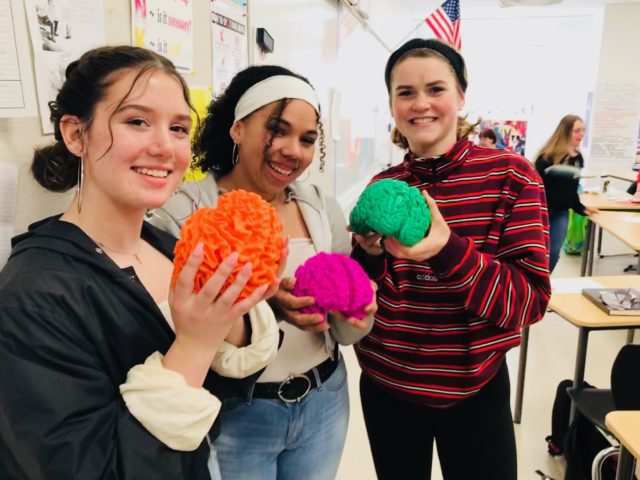This week our Noggins returned in force to a stunningly renovated Franklin High, after two years of voter-approved seismic upgrades beautifully revitalized yet another Portland Public School…
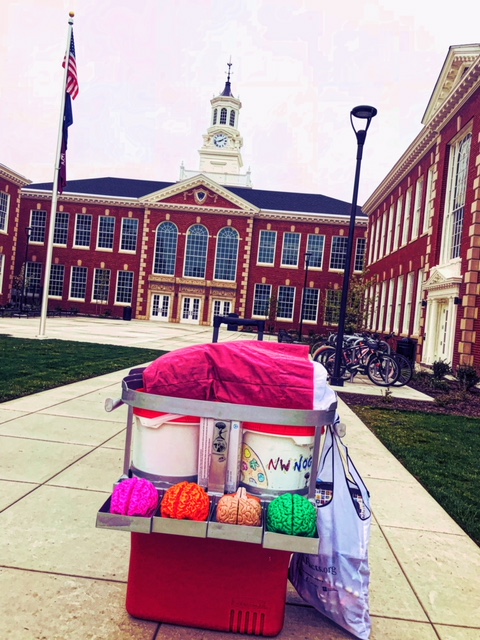
The message sent to students, teachers, staff and visitors is clear in school improvements – that education is a priority for this community. In fact, some studies have found a relationship between increased absenteeism (and asthma) – and the extent of school building disrepair…
LEARN MORE: The Impact of School Building Conditions on Student Absenteeism
LEARN MORE: Asthma hospitalization rates among children, and school building conditions
LEARN MORE: Portland Public Schools Give Preview Of Remodeled Franklin High School
LEARN MORE: Portland Public Schools Wins Record $790 Million Bond Measure
The last time we’d visited Franklin, it was temporarily re-located about 40 blocks east at the Marshall High campus. Despite the early hour, we’d filled Karen Polis’s Social Studies and Psychology classroom with eye-opening cerebrums and art – and explored the relationship between music and brain activity (using EEG) through the spellbinding sounds of Wenzl McGowan on sax…
LEARN MORE: Frequencies @ Franklin: Your brain on sax!
LEARN MORE: Moon Hooch NPR Tiny Desk concert

Today we brought along another group of eager Noggin volunteers, including Michelle Greissinger, Jordan Ray, Jade Osilla and Krystal Nguyen from Portland State University, Veronika Lobova from WSUV, Resource Council member Joey Seuferling, and Kim Engeln, a talented researcher, photographer and musician from OHSU…
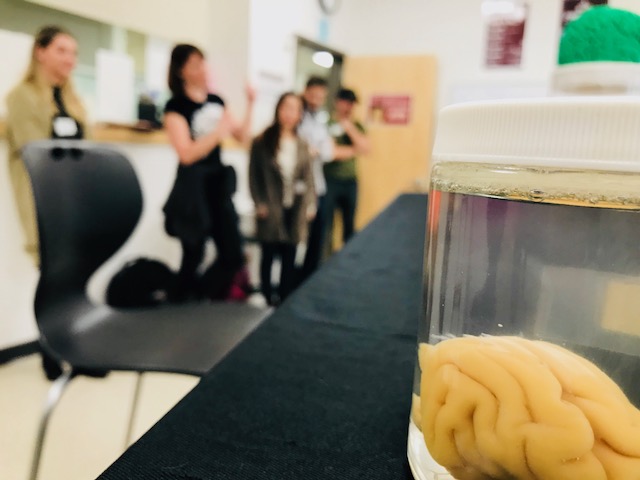
And students had questions!
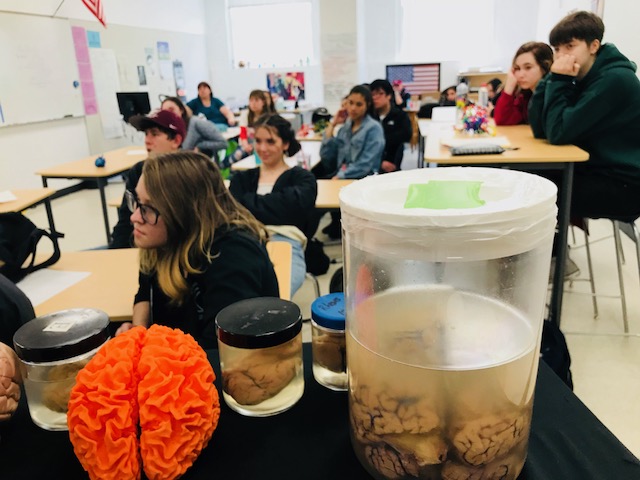
Why is the opioid epidemic getting worse? Why is marijuana considered a Schedule 1 drug? Why isn’t the evident link between gun regulations and gun violence a federally funded area of research? What causes headaches? Does brain size relate to intelligence?

Current treatment of pain involves drugs called opioids, including morphine, codeine, hydrocodone (e.g., Vicodin), hydromorphone (e.g., Dilaudid) and meperidine (Demerol). While opioids, which block the transmission of incoming tissue damage information at the spinal cord and brainstem, offer relief from acute pain, their use in managing chronic pain has been disastrous.
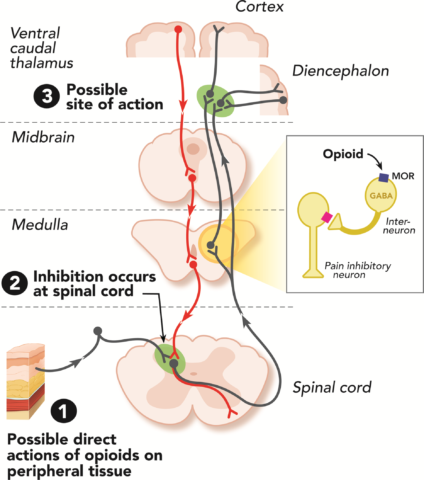
LEARN MORE: Molecular Mechanisms of Opioid Receptor-dependent Signaling and Behavior
According to the Department of Health & Human Services, “in the late 1990s, pharmaceutical companies reassured the medical community that patients would not become addicted to opioid pain relievers and healthcare providers began to prescribe them at greater rates.”
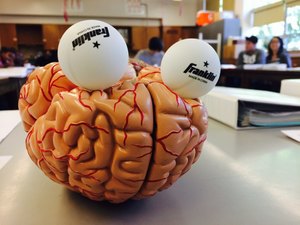
In 2016, 116 people died every day from opioid overdose, and with the increased availability of more potent drugs like fentanyl, mortality rates continue to rise…
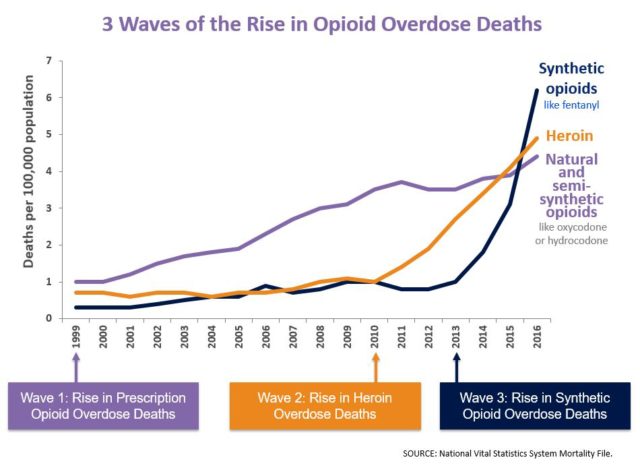
LEARN MORE: CDC on Understanding the Epidemic
LEARN MORE: Fentanyl-contaminated heroin and overdose risk among illicit opioid users

Students were clearly aware that scientific research does not always determine policy or practice, and profit often plays a more powerful (and sometimes fatal) role. For example, according to a 2003 report by the U.S. General Accounting Office (GAO), Purdue Pharma, the manufacturer of the opioid OxyContin, “conducted an extensive campaign” to market and promote the drug “using an expanded sales force to encourage physicians, including primary care specialists, to prescribe OxyContin not only for cancer pain but also as an initial opioid treatment for moderate-to-severe noncancer pain.”
LEARN MORE: OxyContin Abuse and Diversion and Efforts to Address the Problem
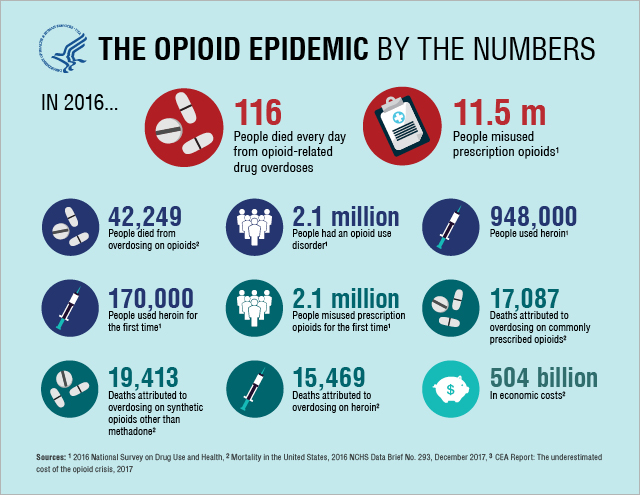
Over $35 billion in profits for Purdue; but hundreds of thousands of Americans dead and millions more dependent on opioid drugs…
LEARN MORE: OxyContin maker Purdue Pharma to stop marketing opioids to doctors
Marijuana, of course, is not OxyContin, or heroin, or fentanyl. In marked contrast to opioids, cannabinoids, the psychoactive chemicals found in marijuana, have no LD-50 (i.e., there is no “LD,” or lethal dose), and appear effective at reducing pain, at least for some chronic conditions…


And in states where marijuana is legal, opioid death rates, dependence risk and prescriptions have plunged, particularly when cannabis dispensaries are subject to less stringent regulation…
LEARN MORE: Recreational Cannabis Legalization and Opioid-Related Deaths in Colorado
LEARN MORE: Do Medical Marijuana Laws Reduce Addictions and Deaths Related to Pain Killers?
Given the potential benefits of cannabinoids for safely treating pain and other maladies, and the known, deadly risks of opioids, reducing legal roadblocks for marijuana access and research offers more public benefit than restriction and demonization. So what’s impeding adequate cannabis research and availability? Overt racism plays a significant role…

LEARN MORE: Why Sessions’ Anti-Marijuana Agenda Is Racist
LEARN MORE: Marijuana legalization means fewer opioid deaths
LEARN MORE: Race, Bias & Brain: You Can’t Control Art

Students were also fascinated by research and non-pharmaceutical treatment approaches to mental disorders, including borderline personality disorder (BPD). Jade Osilla from PSU explained that those with BPD “display symptoms such as self-harm, suicidal ideation and attempts, fears of abandonment and rejection, impulsive behavior and strained relationships.”

“Dialectical behavioral therapy (DBT) is the leading treatment,” added Jade. “It’s a program started by Dr. Marsha Linehan, who was diagnosed with BPD herself. DBT gives people a toolbox of skills they can use in daily life, outside of their therapy. For example, if someone with BPD has a panic attack, instead of choosing a ‘dysregulative’ behavior such as self-harm to recover, they can choose mindful breathing or another practice they learned…”
LEARN MORE: Borderline Personality Disorder
LEARN MORE: Expert on Mental Illness Reveals Her Own Fight
LEARN MORE: Dialectical Behavior Therapy, Current Indications and Unique Elements
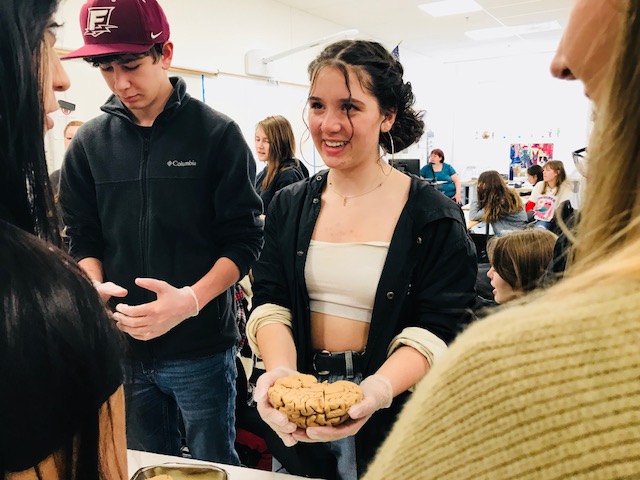

From Noggin volunteer Kim Engeln, a research assistant in John Williams opioid tolerance lab in The Vollum Institute at OHSU: “How do you explain to high schoolers something as enigmatic and complicated as the human brain? For those of us who study this organ, we can enthusiastically ramble on about the neural networks, genes, and specific molecules that we study, but these topics are quickly lost upon young minds who have no context with which to understand our research…”
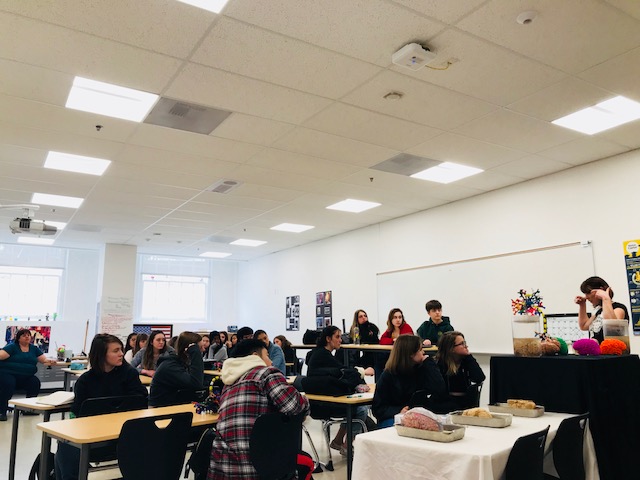
“One way to enthuse and reach students without a science background (or even an interest) is to give examples of how the patterns of nature are reflected all around us. The ordered cables of axons conducting electricity in the brain, for example, can be understood as the wiring in our walls, with electrical leads providing electricity to different parts of a building. On switches and off-switches, like excitatory and inhibitory synapses driving behavior, ultimately determine which lights, outlets and appliances are activated. This sort of example offers a way to teach students and give them context in which to understand topics as complicated as neuroscience.”
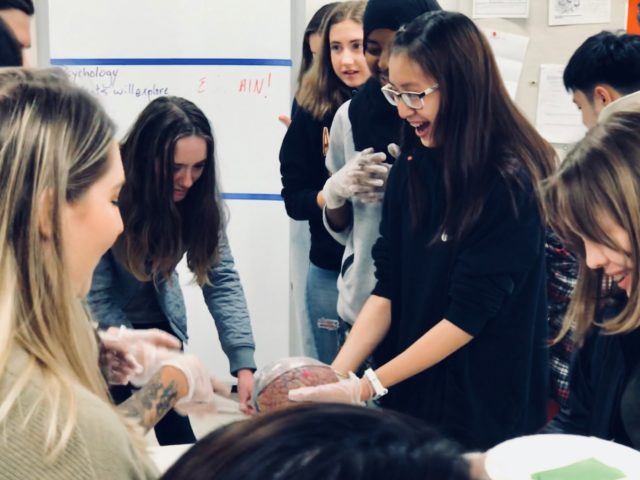


Kim is also an accomplished musician in the band The Secret Ceremony, and she brought along a snare drum. “Every interest a student has can be related back to the brain,” notes Kim, “and NW Noggin volunteers are exceptionally adept at using art to portray the inter-workings of the brain. Music in particular can be used to communicate working examples of the emotional processing of the brain, and at Franklin High School we demonstrated arousal and the sympathetic nervous system while students played drums using a homemade galvanic skin response machine..!”

“By using art, music and metaphors, we can excite students and get them to form synapses that associate science with enjoyment and enthusiasm. These high schoolers may have been shy to ask questions about the brain initially, but once they had the opportunity to experience the tactile sensation of holding a brain, play music while monitoring their sympathetic (‘fight or flight’) responses, and converse with volunteers about how the brain connects to their favorite hobbies, they suddenly become engaged as they make emotional connections with what they are learning. I hope to see these students next year and look forward to seeing how this experience transformed how they perceive the world around them.”


From PSU volunteer Jordan Ray, who built the galvanic skin response (GSR) detection equipment himself: “After fielding some awesome questions from students, we had some time to demo the GSR. While playing the drum, we looked for changes in autonomic activity. Once the student was on the spotlight, deflections in the voltage plotter signified a sypathetic response, meaning the sweat was flowing. However, once the student got into the groove, the deflection moved upwards signifying that the sweat was drying up and the student was experiencing a parasympathetic rebound…”

“It was a very fun mini experiment,” said Jordan.

LEARN MORE about Jordan’s biofeedback project: Brains, biofeedback & SLEEP
LEARN MORE: Autonomic Nervous System (Involuntary Nervous System)
LEARN MORE: Physiology of the Autonomic Nervous System
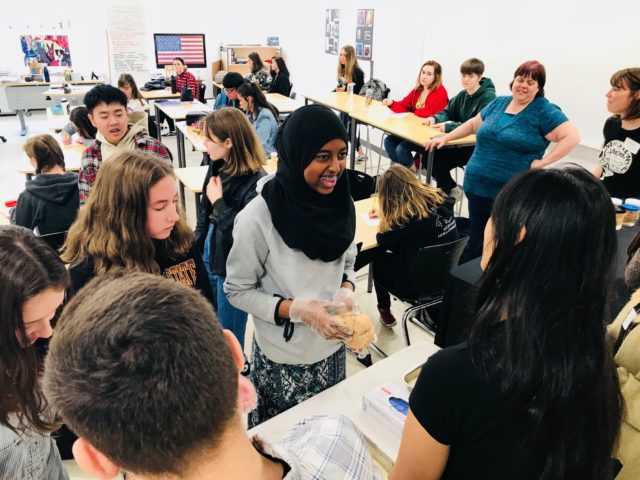
Many thanks to Karen Polis and her students for welcoming us back to Franklin High!
